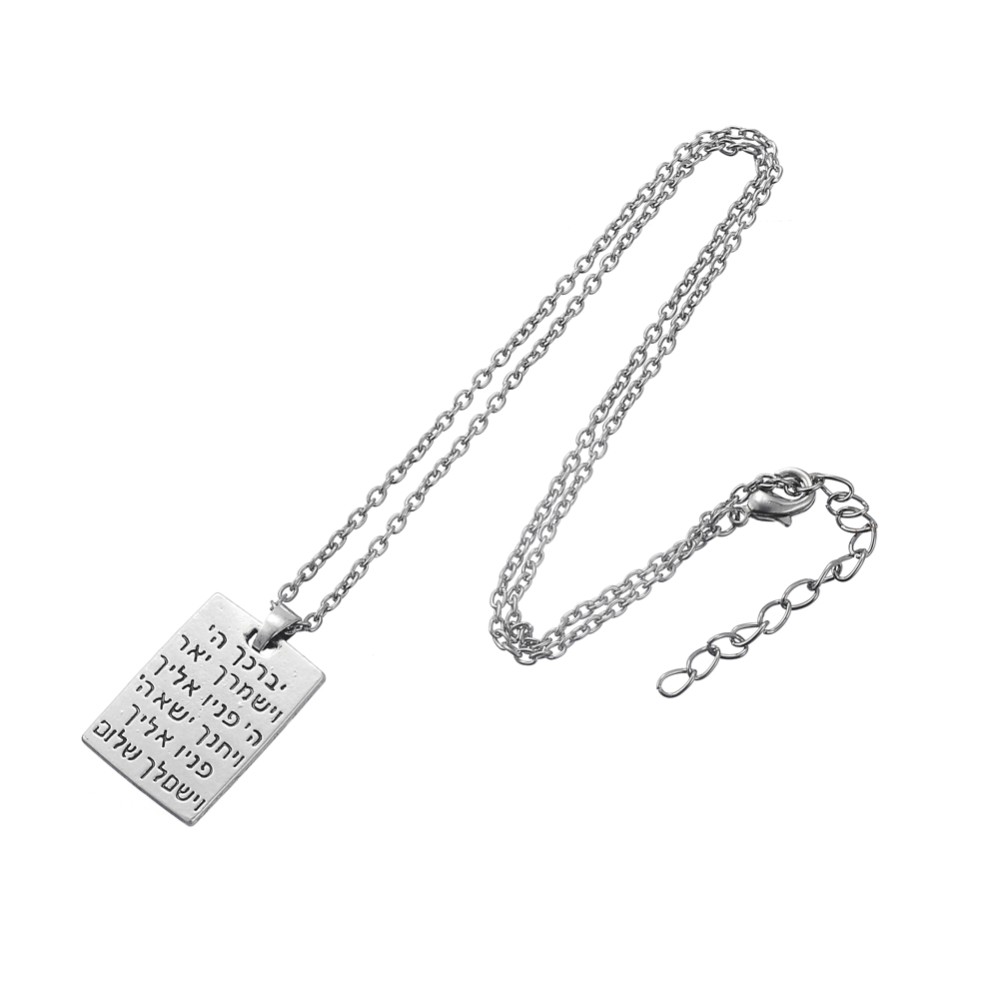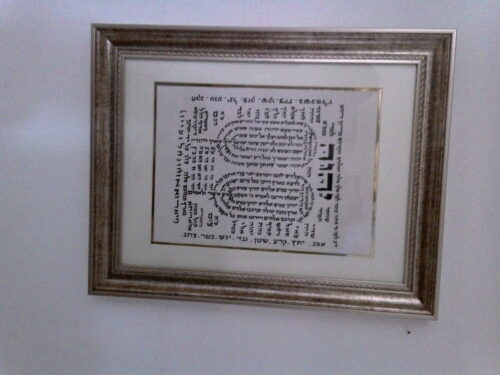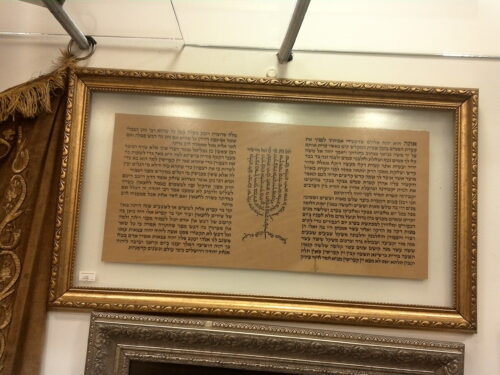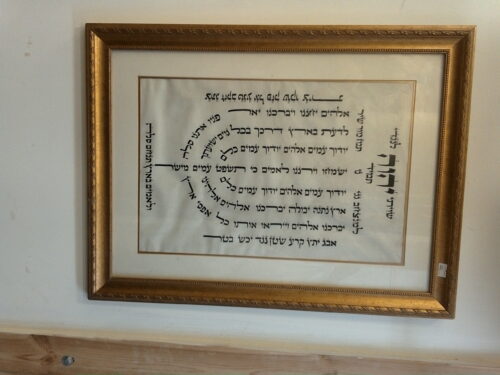ויקרא 9:22 וספר דברים 10: 8 ו- 21: 5 מזכירים את אהרון או הכמרים האחרים מברכים את בני ישראל.
הטקסט שישמש לברכה מוגדר במספרים 6: 24-26:
[מאי] אדונאי יברך אותך, וישמור עליך –
יְבָרֶכְךָ יהוה, וְיִשְׁמְרֶךָ
(יבהרָך-קַה אַדְחָנֵי וַיִשְׁמַרְכָּה …)
[מאי] אדונאי יעיר את פניו לזרוח אליך, והיה לך אדיב –
יָאֵר יהוּלֵךְ
( “Yā’ēr Adhōnāy pānāw ēlekhā viḥunnékkā …)
[מאי] אדוני הרם הפנים שלו לכם, ולתת לך שלום –
יִשָּׂא יהוה פָּנָיו אֵלֶיךָ, וְיָשֵׂם לְךָ שָׁלוֹם
(“. Yissā Adhōnāy pānāw ēlekhā viyāsēm לך לך שלום “)
זה הוא הטקסט המקראי הידוע ביותר שנמצא; קמיעות עם הפסוקים שנכתבו עליהן נמצאו בקברים בקטף הינם, מימי בית ראשון.
Various interpretations of these verses connect them to the three Patriarchs; Abraham, Isaac, and Jacob, or to three attributes of God: Mercy, Courage, and Glory.[citation needed]
Use of the Blessing to ward off evil
Extrabiblical evidence such as the two silver Iron Age amulets found at Ketef Hinnom, contemporary Phoenician and Punic amulets and bands, and blessing inscriptions from the southern Levant have shown that the language of the Priestly Blessing derived from a broader tradition of apotropaic text, which was often inscribed on metal and worn in order to provide protection against evil.
Versions of the blessing are often found in mortuary and cultic contexts, and anticipate early Jewish commentaries that relate the blessing to death. Although specific words in the Priestly Blessing are commonly found in the Bible, the syntactic sequences in which they occur suggest parallels not to other biblical passages, but to blessing inscriptions from late Iron Age southern Levant. In particular it has been suggested that the enigmatic instruction to “put [Yhwh’s] name on the Israelites” in Numbers 6:27 reflects an ancient practice of physically wearing the deity’s name and blessing for protection against evil.[7]




